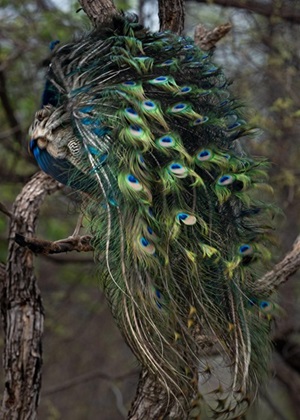.png)

Shivaram, after three decades in financial markets, turned to wildlife photography. His work has featured at the Royal Albert Hall and NTCA.
July 1, 2025 at 3:32 AM IST
June is always a special yet testing month for me as a wildlife photographer. It brings the end of the pre-monsoon tiger season, and with it, a mix of anticipation, logistical hurdles and that bittersweet knowledge that soon many parks will close for the rains. This year was no different. I planned and completed three trips—to Corbett, Bandhavgarh and Panna—each bringing its own share of challenges and unforgettable moments.
Corbett
I started the month with Corbett National Park, always a favourite for its classic Himalayan foothill landscapes. Early June here tends to mean occasional pre-monsoon showers, but I was lucky to avoid any complete washouts. The tiger sightings weren’t spectacular but were rewarding enough, with fleeting glimpses of stripes among the sal and grassland mosaics.
The real highlight, however, came in the form of elephants. Corbett has always been synonymous with elephants, and this trip delivered beautifully. I managed to capture several striking frames of elephant herds moving through those iconic riverbeds framed by misty hills. There is something timeless about watching and photographing these gentle giants in Corbett’s evocative light. For me, those images tell the true story of this trip—a portrait of raw, unspoilt wilderness that is at once grand and intimate.
Bandhavgarh
Mid-month I moved to Bandhavgarh, but this time I had deliberately scheduled the trip a little later than usual, hoping for dramatic monsoon skies while still catching the last window of tiger sightings. It was a bit of a gamble, and I did pay the price with heavy downpours that washed out two of my safaris completely.
But wildlife photography teaches patience, and even short windows between showers can bring surprises. Bandhavgarh is primarily known for its tigers, but one of the most special moments for me this time was photographing a tusker—my first time shooting elephants in Bandhavgarh since they became resident in the park a few years ago. Capturing an elephant framed against those rugged Vindhyan hills felt like a rare privilege.
And yes, there were tigers. Between rain spells, I managed to get a few lovely frames that felt well worth the wait. The combination of soaked forest floor, steaming earth and diffused light creates a truly magical atmosphere for tiger photography, even if the sightings are brief.
Panna
My final trip for the season was to Panna—a park that feels like an old friend. By the time I arrived, the landscape had transformed into a lush green carpet, thanks to early and generous rains. Every safari here was accompanied by showers of some kind, testing both equipment and my own endurance.
Yet the rains also brought rewards. Panna’s tigers have been a wonderful conservation success story in recent years, and I was fortunate enough to photograph tigress 151 with her two cubs. Watching them navigate the emerald grass and dripping teak groves was simply beautiful. We also sighted the cubs of tigress 141 and the impressive male tiger 243, who posed long enough for a few satisfying images.
As June draws to a close, I feel both grateful and reflective. The pre-monsoon season always reminds me how unpredictable and generous nature can be. These images are more than just records of sightings—they are memories of waiting in the rain, of the hush before a tiger emerges, and of India’s incredible wild spaces renewing themselves for another season.




